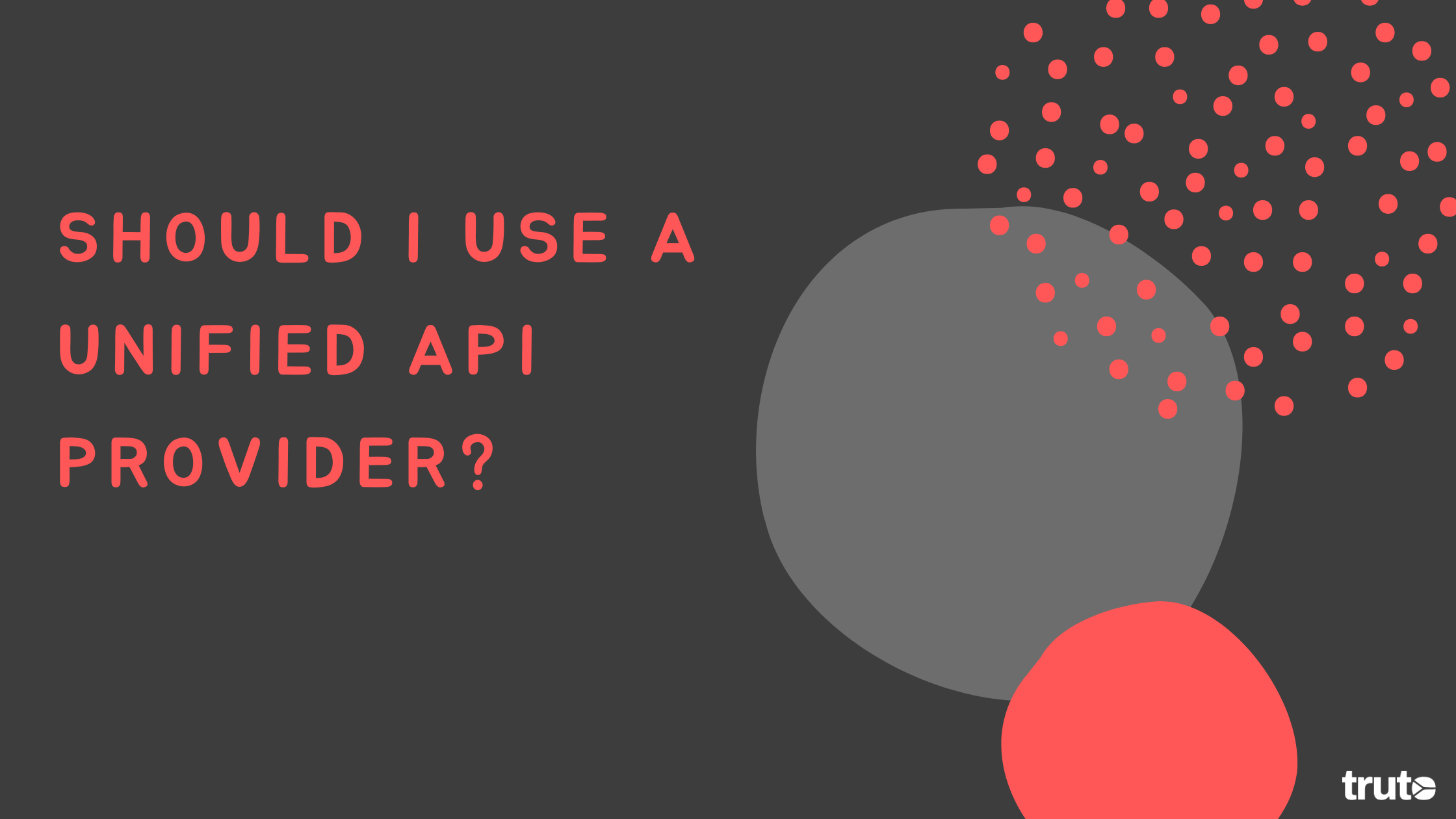Should I Use A Unified API Provider?

Once you decide to use a unified format for your integrations, the next question that arises is whether you should use a unified API provider.
Using a unified API provider can come against the backdrop of what types of resources you have, how your company is set up, and your upcoming strategies. Here are some considerations and how to make decisions based on them:
GTM
Are you looking at GTM sooner? In 2 weeks? or in 3 months? If your current resources are getting in the way of your GTM plans, you should use a unified API provider. Using a unified API provider can help you build an MVP that's built around what your customers need.
If your GTM strategy includes integrations, you should look at using a unified API provider. We have observed some of our customers (>1000 employees) building two integrations a quarter and then seeing that they can add hundreds of integrations in a few days to their pleasant surprise. They are then able to allocate their engineering resources to other parts of the product.
Integrations are one of the top three factors customers consider today when buying a B2B product. The other two are price and ease-of-use.
Resources
How big is your team currently? Is it just one co-founder who is writing all the code? Perhaps you made your first software engineer hire and they are building features? If this is how your team is set up, you can use a unified API provider.
As a large company, does your strategy include integrations as a moat? Then you should use a unified API provider. It will help ensure that you stay ahead of your competition and that your customers get all the integrations they want.
Most times, the solution provided by the unified API provider will be able to match your demands as a growing company. If you feel that they may not be able to support you, you should consider moving things in-house or switching to another unified API provider.
Number of Integrations
If you're looking at building just one or two integrations, then it's better that you build them in-house. It might take a couple weeks, but you don't have another tool to manage. And why pay for something when you cannot take full advantage of it?
If you're looking at integrating with a considerable number of applications, within a short time frame, then you should look at using a unified API provider. For example, Truto can help you go live with more than 200 apps in less than an hour.
Product Roadmap
Is your product roadmap full of features to be built for customers, and you are struggling to find spots to add the integrations your customers have requested? Then perhaps it's time to start using a unified API provider.
Maintenance
If integrations do not form a core part of your product, then you'll have to spend resources on maintaining them in the long run too. In 1 or 2 years, do you want to spend time and money on maintaining integrations from a strategic point of view? If the answer is no, you should look into using a unified API provider.
Effort vs. ROI
If you need to build and maintain integrations in-house, you'll need at least two full-time, full-stack engineers working on it. The average salary for a full-stack engineer is now about $80k. That's $160,000 a year. You'll need to assess the prices quoted by your unified API provider and make a choice. Truto's pricing for its unified API solution will make this choice a no-brainer.
Once you have decided to use a unified API provider based on these factors you will want to make sure you're choosing the best one. Here's a blog post on how to choose a unified API provider. And you should make sure that you are asking them these questions so you have a thorough understanding before choosing them.
